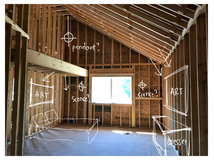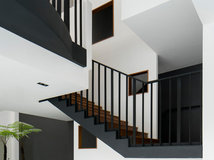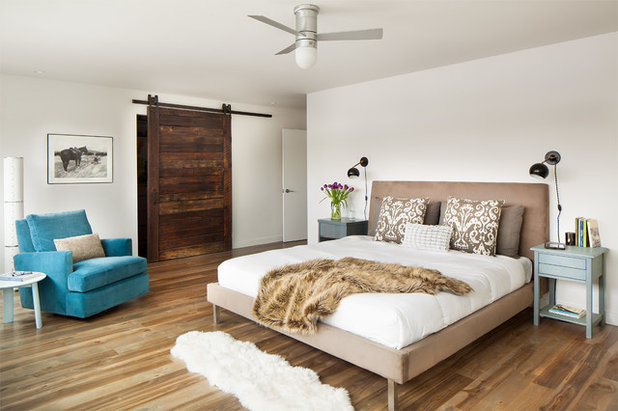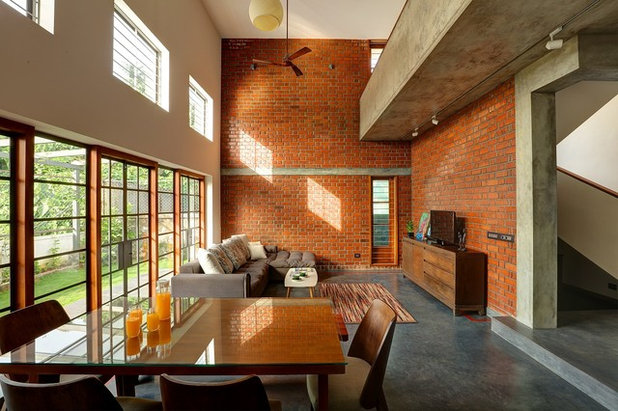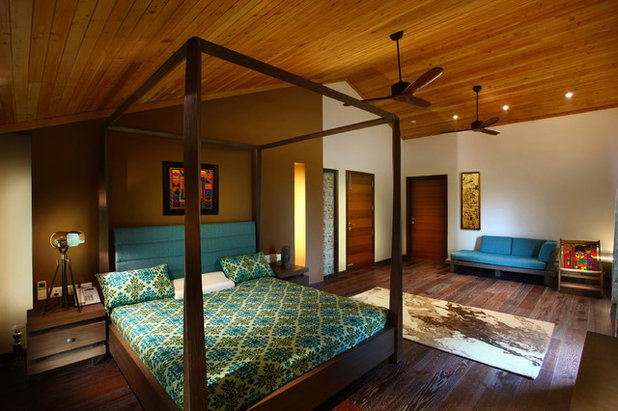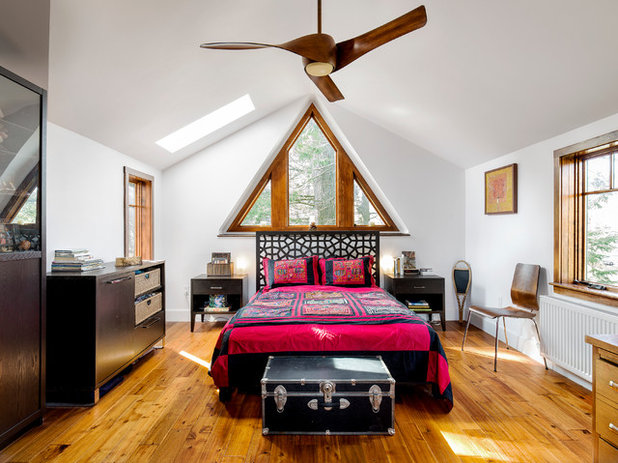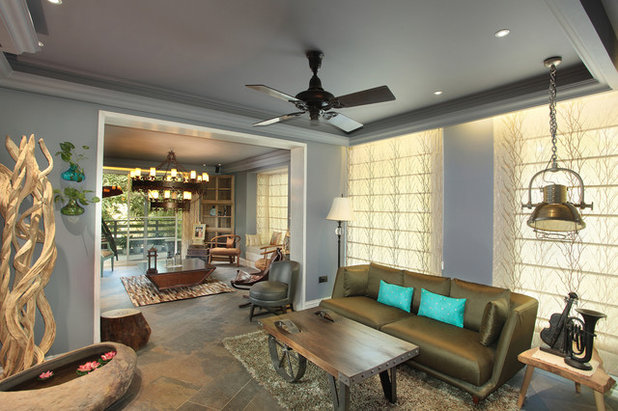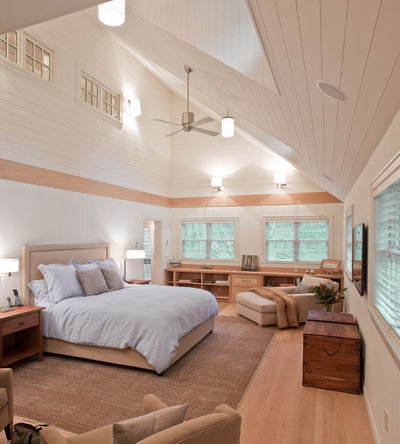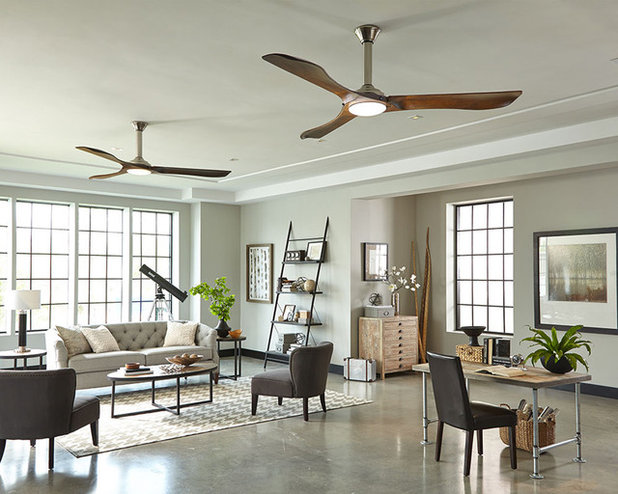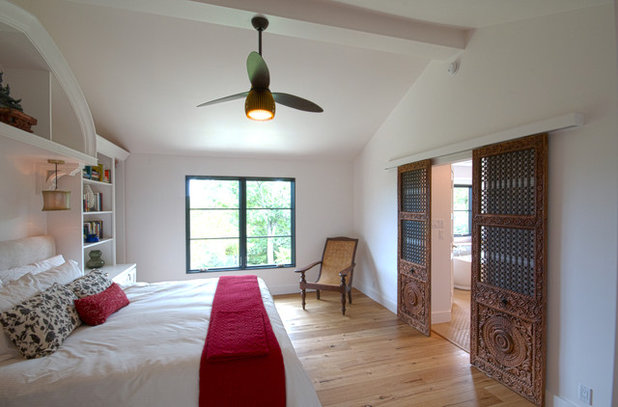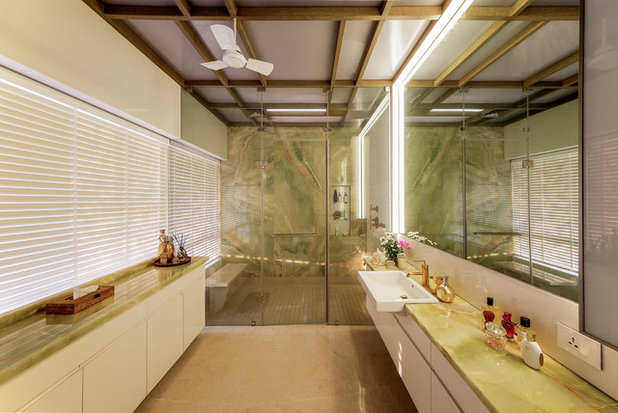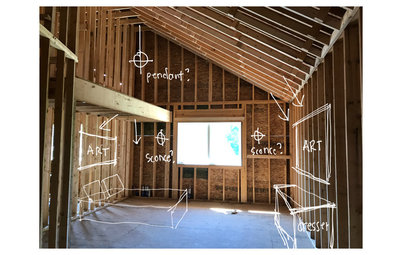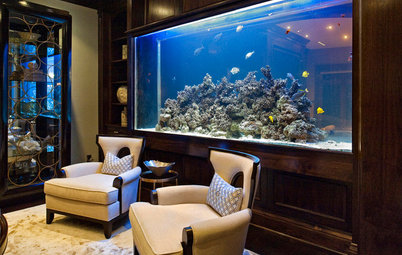Comments
How to Choose the Right Ceiling Fan
Ask these questions before choosing a ceiling fan for your home
Vinita Kunnath
1 August 2018
A Houzz India contributor, freelance writer, lover of the internet, travel, funny blogs and all things off-beat, with an eye for good taste and aesthetics. Home, not clothes, maketh a man.....or woman.
A Houzz India contributor, freelance writer, lover of the internet, travel, funny... More
Most of us don’t think twice before heading off to the shops and buying the first ceiling fan that pleases the eye. At least for me, buying a ceiling fan for the home is a minor detail as compared to say, picking the right lights or choosing the colour of curtains. As it turns out, as if the myriad choices now available aren’t enough to confuse us (growing up, the standard three-blade white fan was a fixture in every home), there is actually a science behind choosing the right ceiling fan. Read these questions and answers to get your money’s worth the next time you need to buy a ceiling fan.
1. What size ceiling fan should I buy?
The size of the room would determine how big your ceiling fan should be. Fan size is measured by its diameter (blade span), which should be proportional to the space. A fan that’s too small for a room might not stir up enough air and one that’s too big could create a mini hurricane of sorts.
A general rule is that for a room with an area of up to 7 square metres (75 square feet), the fan size should be a maximum of 91 centimetres; 107 centimetres for rooms up to 9.3 square metres(100 square feet), 132 centimetres for rooms up to 21 square metres (225 square feet).
Tip: Keep in mind that if the room is very large, you might want to consider using two fans instead of one. Ensure a clearance of 46 to 60 centimetres of space on all sides.
Pro Tip: The smaller the fan, the more forceful the airflow you feel below; the bigger the fan, the more it will feel like a gentle breeze.
The size of the room would determine how big your ceiling fan should be. Fan size is measured by its diameter (blade span), which should be proportional to the space. A fan that’s too small for a room might not stir up enough air and one that’s too big could create a mini hurricane of sorts.
A general rule is that for a room with an area of up to 7 square metres (75 square feet), the fan size should be a maximum of 91 centimetres; 107 centimetres for rooms up to 9.3 square metres(100 square feet), 132 centimetres for rooms up to 21 square metres (225 square feet).
Tip: Keep in mind that if the room is very large, you might want to consider using two fans instead of one. Ensure a clearance of 46 to 60 centimetres of space on all sides.
Pro Tip: The smaller the fan, the more forceful the airflow you feel below; the bigger the fan, the more it will feel like a gentle breeze.
2. How high up should I hang my ceiling fan?
A fan needs to be suspended 2.4 to 2.7 metres off the ground for optimum air circulation. Do consider the size of the room before deciding on the type of fan – either a hugger fan or a fan with a downrod. Hugger fans, true to their name, hug the ceiling and are meant for low ceilings. Ideal for rooms with ceilings at least 2.4 metres high, they are mounted flush to the ceiling with no extra attachments. A space of 30 centimetres is the minimum required between ceiling and fan.
A fan needs to be suspended 2.4 to 2.7 metres off the ground for optimum air circulation. Do consider the size of the room before deciding on the type of fan – either a hugger fan or a fan with a downrod. Hugger fans, true to their name, hug the ceiling and are meant for low ceilings. Ideal for rooms with ceilings at least 2.4 metres high, they are mounted flush to the ceiling with no extra attachments. A space of 30 centimetres is the minimum required between ceiling and fan.
You will need fans with downrods (the part that suspends the fan from the canopy) for high-ceilinged rooms. Downrods range from 8 to 183 centimetres in length. The more the space between the blades and ceiling, the better the air circulation.
Tip: Choosing the right height is important. Remember, the job of a ceiling fan is not to cool but to create a pleasant breeze. So, if it’s positioned too high, you won’t feel the airflow.
Tip: Choosing the right height is important. Remember, the job of a ceiling fan is not to cool but to create a pleasant breeze. So, if it’s positioned too high, you won’t feel the airflow.
3. What’s with the different number of blades?
More is not merrier in this case. The number of blades a fan has is more an element of design than functionality. There is little difference between the performance of a three-, four- or five-bladed fan, so choose one based on preference and style.
No-reno fixes to visually lift a low ceiling
More is not merrier in this case. The number of blades a fan has is more an element of design than functionality. There is little difference between the performance of a three-, four- or five-bladed fan, so choose one based on preference and style.
No-reno fixes to visually lift a low ceiling
Personally, I think the classic three-blade fans are still the best in terms of looks and utility. Nowadays, there are several different finishes to choose from, and you get reversible blades too.
Tip: Remember, the number of blades does not affect performance, but it does affect cost. The more the blades, the higher the cost.
Tip: Remember, the number of blades does not affect performance, but it does affect cost. The more the blades, the higher the cost.
4. Does blade material make a difference?
Blades can be metal (stainless steel or aluminium), wood (timber, plywood or MDF) or PVC or plastic. There’s no difference in performance, so feel free to choose one that complements your sense of style, but ensure it’s of good quality. A high-quality finish will resist corrosion, blistering and fading. A good metal finish will not need polishing for several years and good-quality plastic finishes will stay thick and durable for many years.
Blades can be metal (stainless steel or aluminium), wood (timber, plywood or MDF) or PVC or plastic. There’s no difference in performance, so feel free to choose one that complements your sense of style, but ensure it’s of good quality. A high-quality finish will resist corrosion, blistering and fading. A good metal finish will not need polishing for several years and good-quality plastic finishes will stay thick and durable for many years.
5. How important is the motor?
The motor is the key component and the one that propels the fan, so yes, it’s an important factor to consider. Low-quality motors might provide reduced air circulation over time, produce heat and operate noisily.
The newest addition to the ceiling fan industry, DC motors are powerful yet energy-saving. They are up to 70 per cent more efficient than the regular motors. In addition, they are virtually soundless and their small size results in lighter fans.
The motor is the key component and the one that propels the fan, so yes, it’s an important factor to consider. Low-quality motors might provide reduced air circulation over time, produce heat and operate noisily.
The newest addition to the ceiling fan industry, DC motors are powerful yet energy-saving. They are up to 70 per cent more efficient than the regular motors. In addition, they are virtually soundless and their small size results in lighter fans.
6. Can I install a ceiling fan on a sloped ceiling?
Yes, you absolutely can. Apart from hugger fans, most fan canopies (the part that attaches to the ceiling) can be fixed on a slope of up to 30 degrees. If the slope is more than 30 degrees, an angled mounting kit will be required. In either case, use an additional downrod if required, to ensure enough blade clearance from the ceiling.
Yes, you absolutely can. Apart from hugger fans, most fan canopies (the part that attaches to the ceiling) can be fixed on a slope of up to 30 degrees. If the slope is more than 30 degrees, an angled mounting kit will be required. In either case, use an additional downrod if required, to ensure enough blade clearance from the ceiling.
7. Can fans also light the room?
Many modern styles of fans come with built-in lights or offer a compatible solution. Fans with lights are a great option for overhead ambient illumination, albeit ones that may need to be supplemented with other light fixtures.
Many modern styles of fans come with built-in lights or offer a compatible solution. Fans with lights are a great option for overhead ambient illumination, albeit ones that may need to be supplemented with other light fixtures.
Having a ceiling fan with a light gives you a reasonable amount of ambient light in a room. Many light kits come with dimmers, so adjusting the light intensity is convenient.
Tip: Use LED bulbs for maximum energy saving and long life, especially on fans installed on high ceilings – you won’t have to get up on a ladder to change your bulb for a long, long time.
Tip: Use LED bulbs for maximum energy saving and long life, especially on fans installed on high ceilings – you won’t have to get up on a ladder to change your bulb for a long, long time.
8. Can I put them outside?
In tropical climates such as ours, we need fans as much outside in patios and verandahs as inside. For the outdoors, choose fans that are damp- or wet-location approved. When installed outside, their use is two-fold: they serve as much to cool as to keep insects away.
Tip: Outdoor ceiling fans can be used inside but not vice-versa. They come with protective coverings to prevent corrosion from moisture, which the indoor ones do not possess.
Browse verandah design ideas
In tropical climates such as ours, we need fans as much outside in patios and verandahs as inside. For the outdoors, choose fans that are damp- or wet-location approved. When installed outside, their use is two-fold: they serve as much to cool as to keep insects away.
Tip: Outdoor ceiling fans can be used inside but not vice-versa. They come with protective coverings to prevent corrosion from moisture, which the indoor ones do not possess.
Browse verandah design ideas
9. What kind of fan do I need for the bathroom?
The same as the ones you use for the outdoors in the covered patio; that is, they should be listed for damp locations. Bathroom ceiling fans start at 74-centimetre blade spans, since smaller spaces require less air circulation.
TELL US
Do you have other tips to share with us? We would love to hear from you in the Comments section below.
The same as the ones you use for the outdoors in the covered patio; that is, they should be listed for damp locations. Bathroom ceiling fans start at 74-centimetre blade spans, since smaller spaces require less air circulation.
TELL US
Do you have other tips to share with us? We would love to hear from you in the Comments section below.
Related Stories
Renovating
How Do I… Know What I Can and Can’t Do in an HDB Renovation?
By Niki Bruce
When it comes to renovating your flat, you need to know what you can and can’t do before you get started.
Full Story
Renovating
How to Feng Shui Your Apartment
By joeyyap
How can this traditional technique be used for apartments, condominiums, and other high-rise buildings?
Full Story
Lighting
8 Steps to Do an Electrical Walk-Through of Your Home
By David Warfel
To create the best lighting plan for your home and avoid common mistakes, take these steps before you renovate
Full Story
Architecture
An Architect Tells Us How to Read Floor Plans
Understanding floor plans is a must when building or doing an A&A. Learn how to in the first of our two-part guide
Full Story
Renovating
8 Steps to a Great Renovation
Get your renovation to go as planned with this guide
Full Story
Renovating
7 Ways to Make Low Ceilings Look Higher
By Becky Harris
Well-chosen paint finishes, lighting, wall mouldings and other details can give your rooms a visual lift
Full Story
Renovating
14 Essential Things to Consider When Painting a Room
Paint your way to a perfectly coordinated room with this step-by-step guide to redecorating your interior
Full Story
Renovating
How Do I… Save Money When Painting My Home?
By Niki Bruce
Painting experts share budget-friendly tips for doing it on your own
Full Story
Renovating
Tank Up on These 5 Pointers Before You Set Up an Aquarium
Use this beginner's guide to get you started on an awesome aquarium
Full Story



